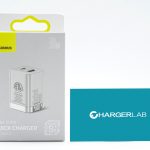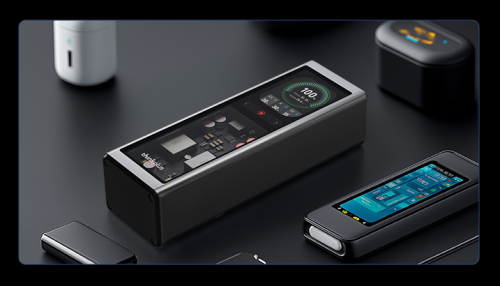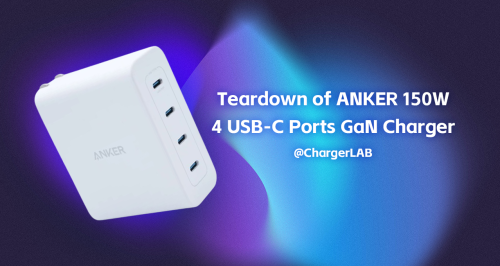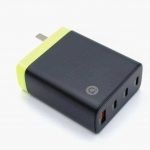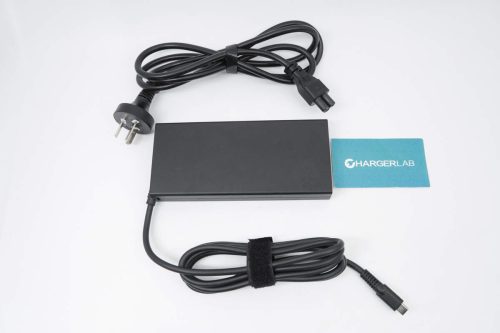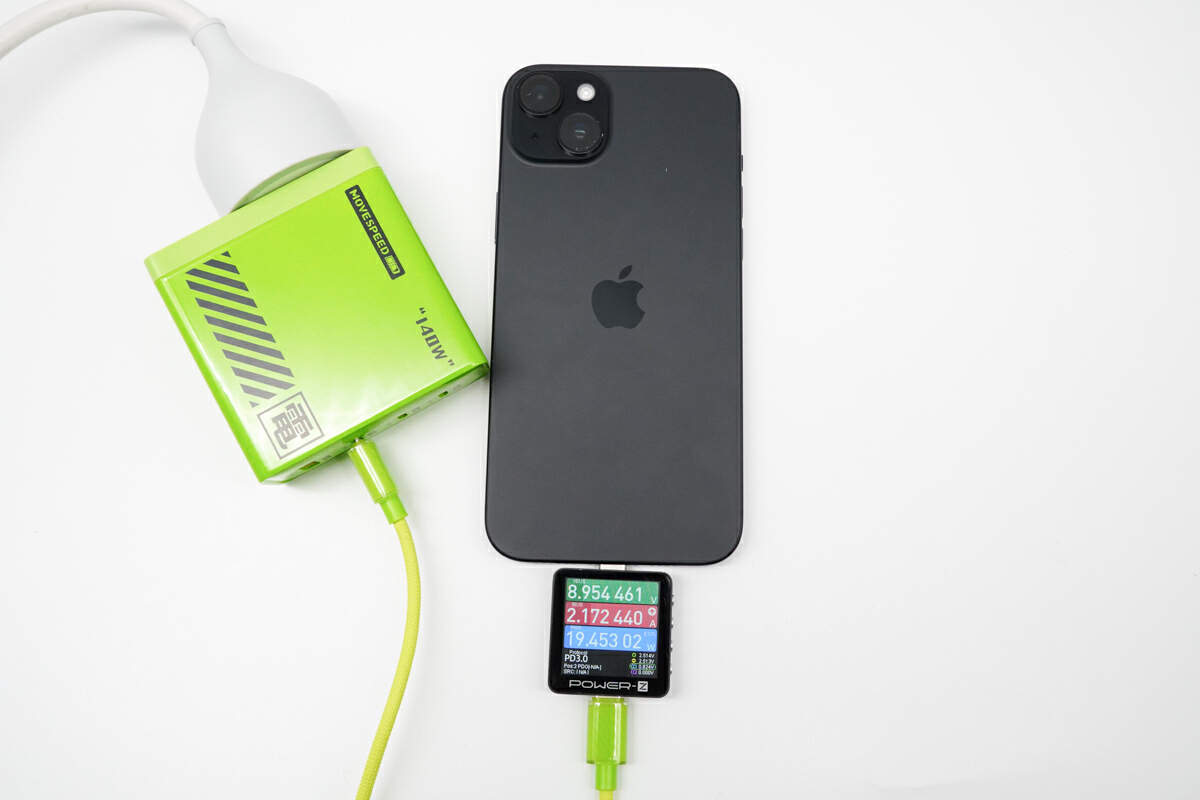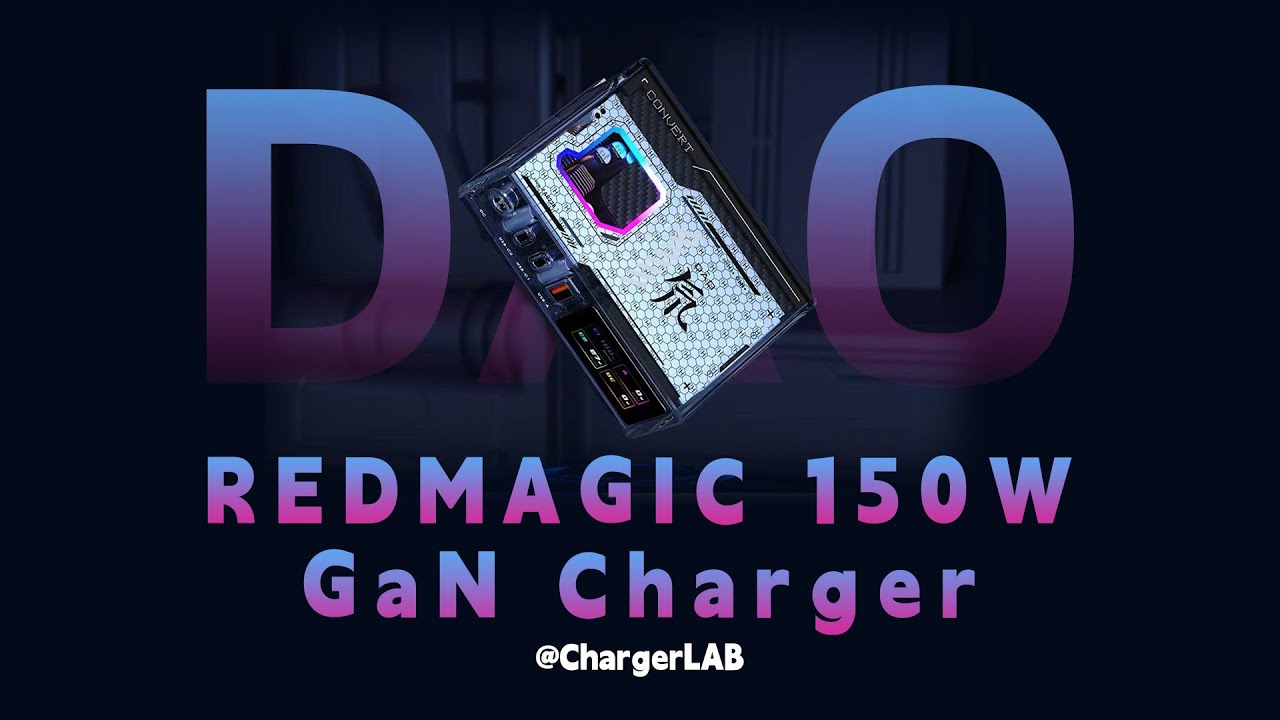ChargerLAB has tested the peak charging power of the iPhone 13 Pro Max goes up to 27W. So, we can see more and more 30W chargers on the market.
But it’s somewhat wasteful for 30W to charge only one device. So, today, we will introduce a dual-port 30W charger, which comes from Baseus.
It’s equipped with a USB-A and a USB-C. Only USB-C Port single output Max support 30W.
But what will happen if we use it to charge two devices simultaneously? Let’s test it out.
If you're interested in it, you can check it on Amazon to know more details.
Special Code: SUPERSI53 (40% OFF) 2022/03/07-2022/03/15
- Product Introduction

The packaging of the Baseus 30W charger is as simple as ever, with the “Super Si” logo in the lower right corner.

It contains the charger, manual, and sticker.

The shell is white plastic, and an LED charging indicator is at the corner.

The Baseus logo is on the side of the charger.

After connecting it to power, the indicator will light up, which is quite convenient for some power strips without an indicator light.

Here is Intertek’s ETL certification.

The “30W Super Si” logo is on the other side of the charger.

It adopts foldable prongs (US version).

Both USB-A and USB-C are Orange.
Two mental contacts of USB-A are widened for higher current.

Let’s take a look at the bottom information. The charger model is CCCJG30CS, which supports wide-range input voltage.
Only USB-C single output can reach 30W. The USB-C can support 18W, and USB-A can support 12W when you charge two devices simultaneously.

The length of the charger is about 48.35mm (1.9 inches).

Height is about 35.30 mm (1.39 inches).

The width is about 30.11 mm (1.19 inches).
So, the power density is about 0.58W/cm³.

It’s smaller than the Apple 30W charger.

The weight is about 64.2g (2.26 oz).

That’s how you hold it.
2. Product Reviews
After introducing the appearance and size of the Baseus 30W dual-port charger, let’s see the overall experience of this charger.
We will do different tests to give you a comprehensive review.
Protocol Test

Use ChargerLAB POWER-Z KT002 to test the USB-C’s protocol.
It can support Apple2.4A, QC2.0, QC3.0, QC4+, AFC, FCP, SCP, PE, PD3.0, PPS, etc.

It also supports five fixed PDOs of 5V3A, 9V3A, 12V2.5A, 15V2A, 20V1.5A, and two PPS of 3.3V-11V3A, 3.3V-16V2A.
So, its compatibility is pretty good.

Then, use the KT002 to test the protocol of the USB-A. It can support Apple2.4A, QC2.0, QC3.0, AFC, FCP, SCP, PE, etc.
Charging Compatibility Test
Next, we will charge different devices, including mobile phones, tablets, game consoles, and laptops. Firstly, let’s test the USB-C port.

Use USB-C to charge the Mi 11. The power is about 8.58V 2.99A 25.69W.

Use USB-C to charge the iPad Pro. The power is about 15.2V 1.88A 28.62W.

Use the USB-C to charge the MacBook Pro 16”, the power is about 19.9V 1.43A 28.62W.

Here are the compatibility test results of the USB-C port. We’ve made a chart for you. Most of the devices can support fast charging.

Sort the power from largest to smallest. The champion is the iPad Air 4, and only the Red Magic 6 Pro is less than 10W.

Use the USB-A to charge the Huawei Mate 40 Pro. The power is about 8.15V 2.2A 17.96W.

Use the USB-A to charge the Huawei P40 Pro. The power is about 8.07V 2.18A 27.66W.

Here are the compatibility test results of the USB-A port. Due to the lack of PD and PPS protocols, the charging speed of some devices is slower than USB-C.

Sort the power from largest to smallest. This time, the champion is MEIZU 18 Pro, and the Red Magic 6 Pro is still less than 10W.

Use it to charge the Samsung S20 Ultra and Redmi K50 simultaneously. The output power is 14.22W and 12.82W, respectively. And the total power is 27.04W.
Fully Charged Test
Since the maximum power is 30W, we use the Baseus 30W to charge the iPhone 13 Pro Max fully. The Charging Curve is in here.

We can find the voltage rises from 5V to 9V in about 3 minutes, and then start the fast charging.
It drops from 9V to 5V at about 59 minutes, and the charging ends in 1 hour and 44 minutes.

Compared with Apple 30W, we found those two curves almost overlap. But the Baseus 30W charger is a little bit faster at the final stage. It can charge 47% after half an hour and reach 83% in 1 hour. It takes an hour and 44 minutes to fully charge the iPhone 13 Pro Max.
Standby Power Test
I’m sure most people won’t remove the charger after charging your phone.
So, is there any power consumption in this case, and how much is it?
The standby power test we’ve done can answer this problem.

We can use the power meter to test it. The no-load power consumption of the charger at 220V 50Hz is 0.163W, which is about 1.42KW·h in one year.
And the no-load power consumption at 110V 60Hz is 0.161W, which is about 1.41KW·h in one year.
Conversion Efficiency Test
The charger is essentially a conversion device. So, energy will be lost in the process of converting AC to DC.
Typically, the “100W” or “65W” we see on the charger represents the maximum power that the device can get. But the power drawn by the charger from the socket is usually larger than that.
So, here is the conversion efficiency test of the charger at 220V 50Hz AC and 110V 60Hz AC.

We use the electrical load to test the conversion efficiency under different voltages with full-load. We use the tester to get the output power of the outlet and the input power of the devices.
At 220V 50Hz, the conversion efficiency of the charger varies from 83.82% to 90.03%.

At 110V 60Hz, the conversion efficiency of the charger varies from 83.12% to 89.11%.
Ripple Test
Nowadays, most chargers adopt switching power supply, which means the output current from the transformer needs to be rectified and filtered.
Therefore, there will be ripples in the output current. The lower ripple means better quality.

The ripple test is divided into no-load (Current is 0A) and loaded (Current is non-0A).
Firstly, the input is 220V 50Hz AC.
When the output is 15V2A, the highest ripple is 36mVp-p.
When the output is 5V0A (no-load), the lowest ripple is 14mVp-p.

Then, let’s switch the input to 110V 60Hz AC.
When the output is 15V 2A, the highest ripple is 38mVp-p.
When the output is 9V 0A (no-load), the lowest ripple is 14mVp-p.
Temperature Test
As we mentioned, in the process of converting AC to DC, energy will be converted into heat.
Therefore, the temperature control under long-term running is also very critical.
We’ll put the charger into a 25°C thermotank throughout the test and let it run continuously for an hour. Let’s see what the maximum temperature will be.
Firstly, let’s take a look at the maximum temperature under 220V 50Hz.

The maximum temperature on this side is 66.9°C.

And the other side is 61.8°C.
Then, let’s take a look at the maximum temperature under110V 60Hz.

The maximum temperature on this side is 67.7°C.

And the other side is 63.3°C.
Therefore, the overall temperature performance is pretty good for a dual-port mini 30W charger. That's because it integrates Real-time battery tracking and adopts Baseus Super Si tech, which can generate up to 10% less heat than regular chargers,
This heat-dissipating Silicon-based material is designed to run cool and safe even while working under overheating.
Stability Test of an Hour Full Load
We also tested the full-load performance of this charger.

We adjust the charger to 20V1.5A 30W, and let it run continuously for an hour. The voltage and current curves are horizontal and straight during the test, without obvious fluctuations.
So, it’s quite stable under long-term full-load conditions.
Summary of ChargerLAB
As a well-known brand, this Baseus charger is very sophisticated. With the simple appearance and LED power indicator, you can get the power status at a glance. The folding prongs can make it easier to take along. It adopts the “Super Si” technology, so its performance is very stable in long-term charging tests.
This charger can support mainstream charging protocols, such as Apple2.4A, QC2.0, QC3.0, QC4+, AFC, FCP, SCP, PE, PD3.0, and PPS.
And it’s equipped with a USB-C and a USB-A port. Only USB-C port single output can reach 30W. Even if you charge two devices simultaneously, the total charging speed can be up to 27W.
So, only one charger is pretty enough for you to fast charge your iPhone, iPad, and Android device when you’re traveling.
If you're interested in it, you can check it on Amazon to know more details.
Special Code: SUPERSI53 (40% OFF) 2022/03/07-2022/03/15

